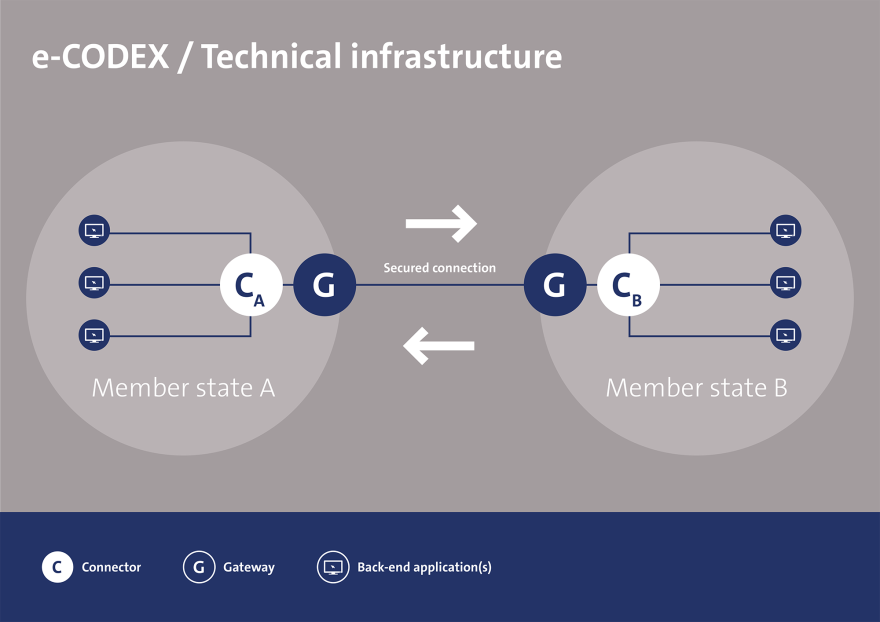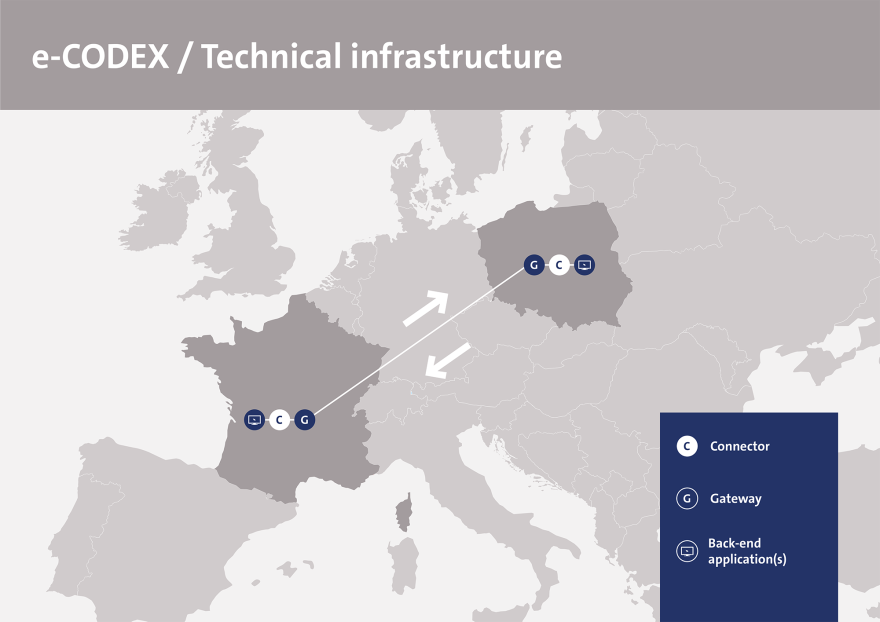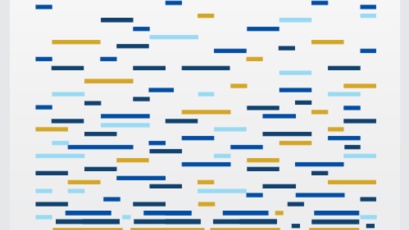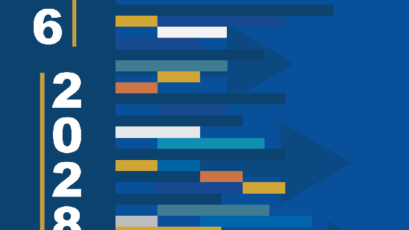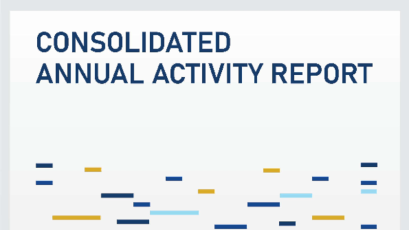Actions
e-CODEX Building Blocks
As the e-CODEX standard sets out some requirements that must be adhered to when connecting to other participants in use-cases, the described building blocks are optional as long as those standards are fulfilled and the technical understanding between e-CODEX participants remains stable.
A rough overview on the decentralised e-CODEX network architecture:
Gateway
The Gateway within e-CODEX is the building block that is responsible for the communication between participants of e-CODEX use cases.
Whereas it is defined in e-CODEX that any gateway solution fulfilling those requirements mentioned above can be used, e-CODEX implemented its own gateway solution. This gateway is the Domibus gateway which is now under maintenance of the CEF programme of the European Commission.
More information regarding the Domibus Gateway, its roadmap, the latest versions and alternative products can be found on CEF's Domibus Website.
The connection of e-CODEX participants at gateway level, is also called e-Delivery.
Connector
The domibusConnector is developed and maintained by eu-LISA. It is a linking component to connect national use-case specific applications to the generic messaging standards of the gateway.
According to its particular settings, each e-CODEX participant must perform some adaptations to the messages. The domibusConnector provided by e-CODEX contains a generic set of modules which aims to provide the common functionality which is needed by every participant and every e-CODEX use-case.
The parts specific to each participant will need some specific and dedicated implementation which is to be done on national level. There may be several national backend applications behind the domibusConnector depending on the national structure (different use-cases are handled by different applications).
The domibusConnector implements two workflows, one for sending messages from the national backend system to the Gateway (outgoing workflow) and the other one for receiving messages from the Gateway and forwarding them to the national backend system (incoming workflow).
Domestic Back-end Applications
Domestic back-end applications are national applications and interfaces developed by each Member State and used by participants. Then, these applications will be linked to the Connector in order to send messages to end-users from different Member States.
e-CODEX Technical Solutions
e-CODEX offers technical solutions for secure online cross-border communication in the field of justice. The technical infrastructure connects different legal systems and ensures fast access to justice past borders.
The technical components of e-CODEX are building blocks which can be seen as bridges connecting online judicial services and information across Europe. The technical infrastructure consists of a connector and a gateway. The installation of the gateway ensures a secured connection with a gateway in another Member State. The connector carries out the adaptations required for receiving encrypted data by the corresponding service provider in another Member State.
Secure electronic information exchange between existing national solutions is facilitated by an interoperability layer for electronic signatures. This validation tool recognises a person's signature using a certificate issued in his or her home country. Using existing systems for the authentication of users adds reliability to electronic legal proceedings and helps avoid malicious use of e-Justice services.
The image below provides a general overview of the technical infrastructure of e-CODEX:
